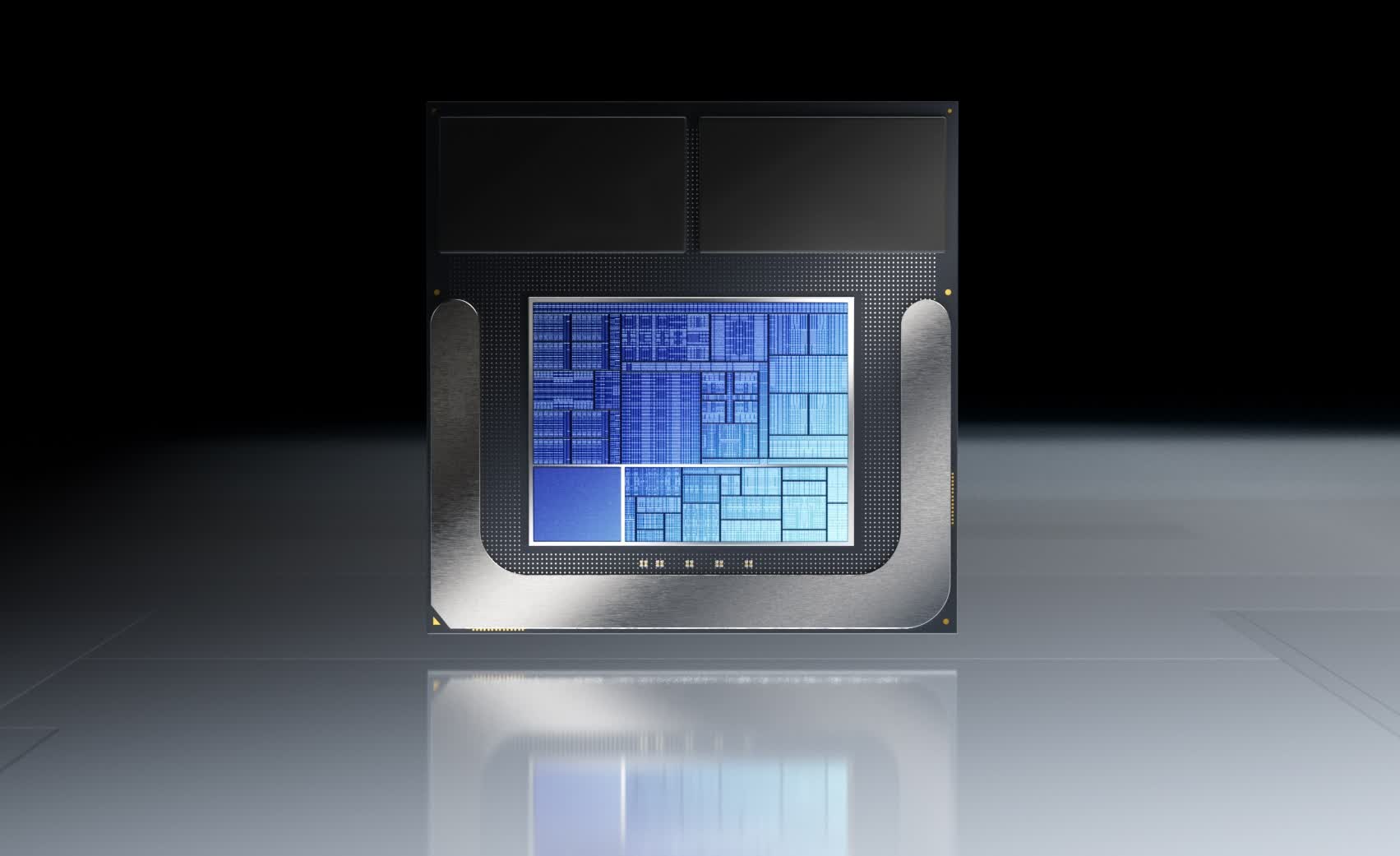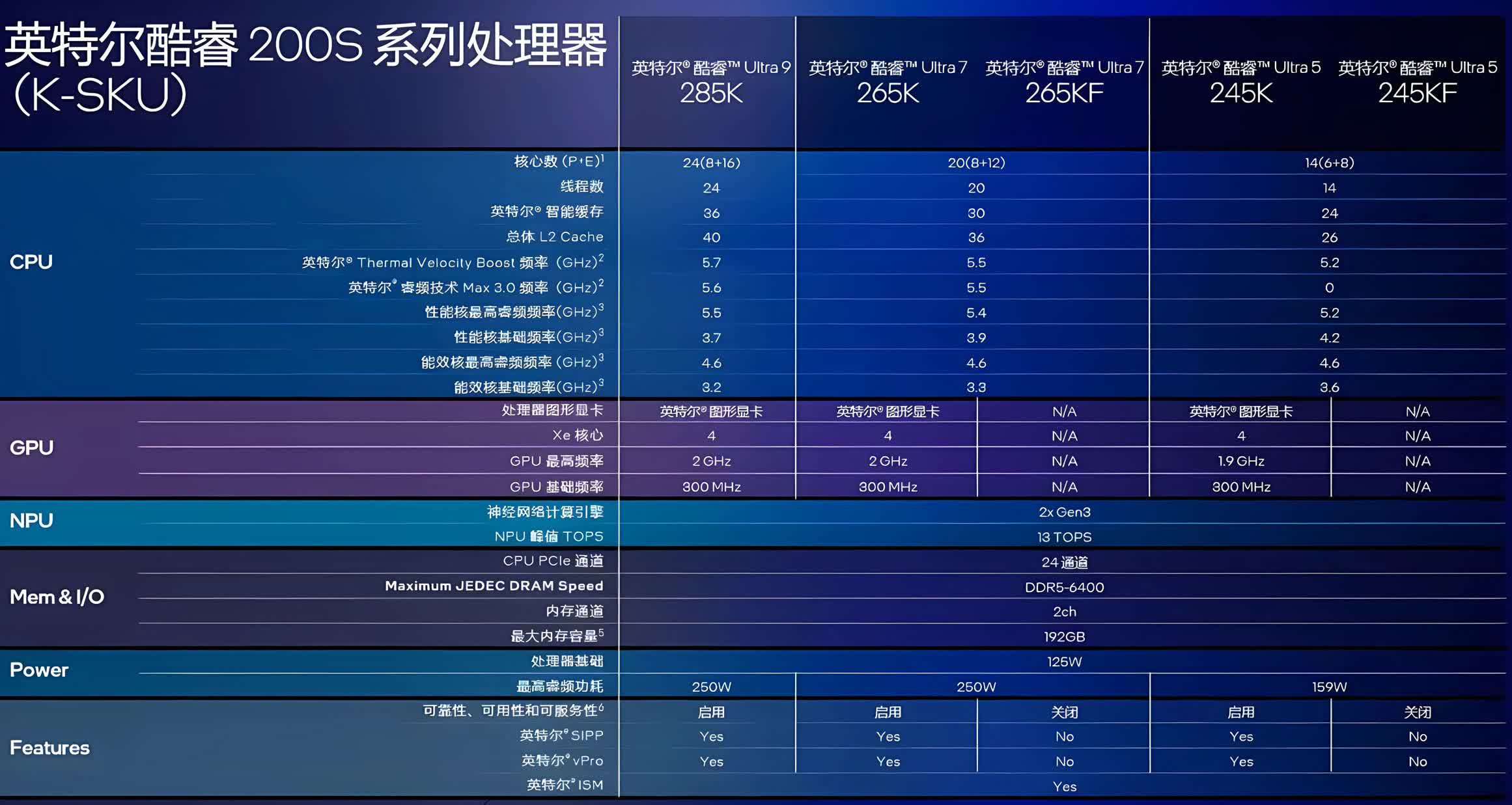Highly anticipated: Intel is set to launch its Arrow Lake-S desktop processors later this month, and a series of leaks have already given us a good idea of what to expect.

The information comes courtesy of tipster HXL, who posted what appears to be an official Intel slide detailing the specs of its Arrow Lake-S CPUs.
The slide indicates the company will initially launch at least five different SKUs in the Core 200S series, led by the Core Ultra 9 285K, which was recently crowned the single-thread performance leader in PassMark. The other four SKUs include the Core Ultra 7 265K, Core Ultra 7 265KF, Core Ultra 5 245K, and Core Ultra 5 245KF.
The slide also confirms several key specs, such as core count, cache sizes, clock speeds, TDPs, and more. According to the document, the Core Ultra 9 285K is a 24-core processor featuring eight "Lion Cove" performance cores and 16 "Skymont" efficiency cores. It is said to have a boost speed of up to 5.7GHz and includes 36MB of Intel Smart Cache alongside 40MB of L2 cache.
– HXL (@9550pro) October 8, 2024
The two Core Ultra 7 processors on the list – the 265K and the 265KF – are 20-core chips with eight performance cores (P-Cores) and 12 efficiency cores (E-Cores). Both are reportedly capable of boost clocks up to 5.5GHz and feature 30MB of Intel Smart Cache and 36MB of L2 Cache. The Intel Xe-LP iGPU in the 265K is clocked at 2.0GHz, while the KF variant lacks integrated graphics.
Lastly, the two Core Ultra 5 CPUs, the 245K and 245KF, are 14-core chips with six P-Cores and eight E-Cores. They offer boost clocks up to 5.2GHz, 24MB of Smart Cache, and 26MB of L2 Cache. The 245K includes four integrated graphics cores clocked at up to 1.9GHz, whereas the KF variant once again omits the iGPU.
Core Ultra 9 285K w. D5-9466https://t.co/vHlv43iVcD pic.twitter.com/4iCEy1U3eq
– í¬ìÂÂí¬ì (@harukaze5719) October 9, 2024
There's also support for DDR5-6400 JEDEC memory, marking an impressive 800MHz jump over the 14th-gen Core processors. These CPUs support up to 192GB of RAM, which remains consistent with the current lineup. Additionally, all five SKUs feature a third-generation Neural Processing Unit capable of 13 TOPS (trillion operations per second), though this is significantly less than the 48 TOPS supported by the Lunar Lake laptop chips, which are aligned with Microsoft's AI PC guidelines.
